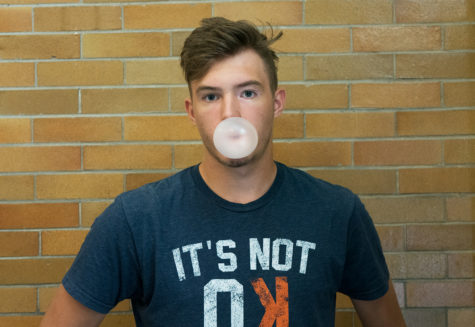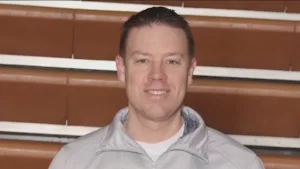Club sports and athletic specialization on the rise
December 13, 2017
Every day in the news, athletes are reminded that there are dangers to playing sports. Concussions, major injuries, or aches and pains that will follow them for the rest of their lives. Pro and college football teams are warned about the dangers of the sport, with many former players exhibiting symptoms of brain trauma, something nobody wants to deal with, especially the parents of young high school athletes.
According to the most recent data available, participation for fall sports this year at DGN dropped to 575 students, down from 620 from the 2016-2017 school year, with the biggest hits occurring in football losing 38 players and girls’ cross-country losing.
In the past five years, football numbers have decreased dramatically, going from a peak at 171 in the 2015-2016 season to a low of 133 players in the most recent season.
“In terms of overall numbers at other high school programs, their program numbers have dropped consistently. There are some schools that are maintaining numbers, but a significant amount are showing less participation than they ever have,” assistant football coach Keith Lichtenberg said. “Wheaton-Warrenville South and Maine South are two teams that have won football state championships in the past ten years successful programs, they both have less than 40 kids on their freshman teams. When I played there, there were over 100 kids going out for football.”
The main reason, some coaches think, is due to the overwhelmingly popular decision to specialize in a sport at an early age in order to stay ahead of the competition.
“The number have fluctuated while I’ve been here, some classes have had more numbers than others,” assistant football coach Chad Isaacson said. “Choosing to play an individualized sport, you do get some that do that. The question is about multi-sport athletes, which the club world has kind of taken over that. Kids are choosing to do one thing earlier on that they have when I first started here.”
What has become a big part of the conversation for assistant football coach Keith Lichtenberg is dual-sport athletes. According to a 2015 NCAA survey of 21,233 student athletes, seventy-one percent of NCAA football players as of 2016 were or are currently dual-sport athletes.
“The value lies in two major things. What we’re doing to kids’ minds. If I were to send my son or daughter to Downers Grove North, I think they would benefit from having multiple coaches and multiple competitive arenas.The diverse coaching makes them better,” Lichtenberg said. “If you were to focus on one sport and do that for twelve months a year, your body is going to break down or wear down. If all you’re going to do is throw or shoot hoops, or cut in football and track, having different things to do keeps your body fresh, it keeps your body reacting to change.”
Lichtenberg believes that the athletic programs need to do a better job of reaching out and explaining how their sport can impact the student for the better.
“I think the number one job for a program is to get its message out about what the sport can do for the student. I think football is a sport a few years ago that was this good old boys’ club where everyone would just show up and we’ll get the talent we get,” Lichtenberg said. “Public schools aren’t in the private school business of recruiting. Public schools need to do a better job of showing what the program can do for the player.”
Girl’s cross-country took the second-largest hit out of the fall sports teams. The program’s ranks thinned to 41 runners, from 66 runners last year.
“Kids are more and more inclined to focus on one sport than anything else. And a lot of times, for girls’ cross country, the culprit comes out to be soccer,” assistant cross-country coach Matthew Maletich said. “It’s a shifting culture, club sports are bigger than it’s ever been. Club coaches are more aggressive than they’ve ever been. Most coaches will sit down with the players and tell them they’re gonna play in college, but when it comes down to it, these coaches are being paid.”
There are club teams for most sports, which compete and practice year-round, and serves as a big time commitment for student athletes.
“In clubs, the kids are being told they’re not good enough to play certain sports, but are at one sport, and the player feels that’s the only thing they can do.”
Starting with the 2016-2017 school year, wrestling began advertising on the Friday morning announcements in order to reach more students. The girls’ cross-country team is currently working on a video of their own in hopes of bringing their numbers up in the next few years.
“Most kids know about football, basketball, and baseball, and the wrestling coaches have to educate students about our sport,” head wrestling coach Christopher McGrath said. “We are just evolving with the times. We used to rely on talking to PE classes. Now we do that and send video announcements. It just seemed like a great way to get the word out.”
Wrestling has seen an increase in participation since their promotional video, reporting above 80 students signing up, better than the 73 participants last year.
Even with the dipping numbers, Lichtenberg feels strongly that the drop is a one time deal.
“I see it as an anomaly more than anything. We had a great graduating class of seniors that stuck together regardless of success,” assistant football coach Keith Lichtenberg said. The junior class beneath them had some juniors that didn’t return their senior year, which happens every year because of playing time, and there were just a few more than normal.”

























